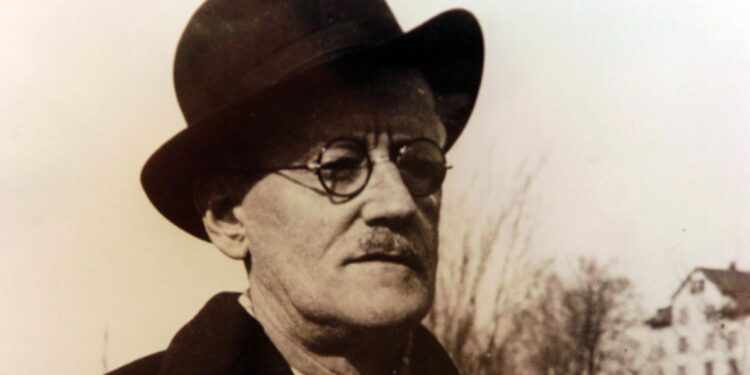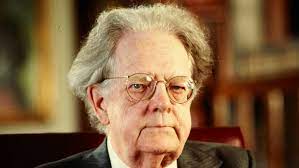James Joyce’s Biography and Work
James Joyce was a renowned Irish writer, considered by many to be one of the greatest authors of the 20th century. His works often explore themes of alienation, disillusionment, and the search for meaning in a complex, changing world. In this essay, we will take a closer look at Joyce’s biography and work, examining the key events that shaped his life and the major literary contributions he made to the world of literature.
Biography
James Augustine Aloysius Joyce was born on February 2, 1882, in Dublin, Ireland, the eldest of ten children. His father, John Joyce, was a financially struggling civil servant, and his mother, Mary Jane Murray, was a devout Catholic who influenced Joyce’s early education. Joyce attended several Catholic schools in Dublin, including Clongowes Wood College and Belvedere College, where he excelled academically.
James Joyce’s Biography and Work:-After leaving school, Joyce attended University College Dublin, where he studied English, French, and Italian. During this time, he became involved in the Irish Literary Revival, a movement that sought to promote Irish culture and literature. Joyce contributed to several literary magazines, including Dana, where he published his first short story, “The Sisters,” in 1904.
Also Read:-
- Gabriel Garcia Biography and Works
- James Baldwin Biography and works
- Toni Morrison Biography and works
- F. Scott Fitzgerald’s Biography and Works
In 1904, Joyce met Nora Barnacle, a young woman from Galway who was working as a maid in Dublin. The two fell in love and decided to leave Ireland together. They first moved to Trieste, a city in northeastern Italy, where Joyce worked as an English teacher. They later moved to Zurich, Switzerland, where Joyce wrote most of his major works.
James Joyce’s Biography and Work:-Joyce’s writing career was often hindered by financial difficulties and health problems. He suffered from various eye ailments throughout his life, and his daughter Lucia was diagnosed with schizophrenia in the 1930s. Despite these challenges, Joyce continued to write and publish his work, earning international acclaim for his innovative style and unique perspective on modern life.
Joyce died on January 13, 1941, in Zurich, Switzerland, at the age of 58, from a perforated ulcer. He is buried in Fluntern Cemetery in Zurich.
Works:
Joyce’s writing career spanned over three decades, during which he produced several major works that revolutionized the world of literature. Below, we will discuss some of his most notable works and their contributions to modern literature.
1. Dubliners (1914)
Dubliners is a collection of 15 short stories that explore the lives of ordinary people in Dublin, Ireland. The stories are set in various neighborhoods and depict characters from different social classes, providing a cross-section of Dublin’s society. The stories are marked by Joyce’s use of stream of consciousness, a literary technique that seeks to capture the inner thoughts and feelings of a character as they occur.
James Joyce’s Biography and Work:-Dubliners is considered a landmark in modernist literature for its depiction of everyday life and the use of stream of consciousness. The stories are also notable for their themes of paralysis and epiphany, as characters struggle to break free from the constraints of their society and find meaning in their lives.
2. A Portrait of the Artist as a Young Man (1916)
A Portrait of the Artist as a Young Man is a semi-autobiographical novel that tells the story of Stephen Dedalus, a young man from Dublin who struggles to find his identity as an artist in a conservative, Catholic society. The novel is divided into five chapters, each representing a different stage in Stephen’s development.
James Joyce’s Biography and Work:-The novel is characterized by its use of stream of consciousness and its exploration of themes such as alienation, rebellion, and artistic expression. A Portrait of the Artist as a Young Man is considered one of Joyce’s most important works and a landmark in modernist literature.
Themes and Style
Themes:
Joyce’s works are known for their exploration of complex themes and the human condition. Some of the major themes present in his work include:
- Alienation: Joyce’s characters often feel disconnected from the world around them and struggle to find their place in society.
- Religion: Joyce was raised as a Catholic and his works often grapple with the role of religion in modern life.
- Identity: Joyce’s characters often struggle to define themselves and find meaning in their lives.
- Nationalism: Joyce was deeply interested in Irish culture and history, and his works often explore the complexities of Irish identity and nationalism.
Style:
Joyce’s writing style is characterized by its experimentation and innovation. Some of the key stylistic features of his work include:
- Stream of consciousness: Joyce was one of the pioneers of the stream of consciousness technique, which seeks to capture the inner thoughts and feelings of a character as they occur.
- Epiphany: Joyce’s characters often experience moments of epiphany, where they suddenly see the world in a new light and gain insight into their own lives.
- Allusion: Joyce’s works are filled with literary, historical, and cultural allusions that enrich the meaning and depth of his writing.
- Wordplay: Joyce was a master of wordplay and often used puns, word associations, and other linguistic devices to create layers of meaning in his work.
James Joyce’s Biography and Work:-Non-linear narrative: Joyce’s works often play with the conventions of linear narrative, jumping back and forth in time and using multiple narrators to create a more complex and nuanced portrayal of his characters and their experiences.
Conclusion
James Joyce was a significant figure in modernist literature, renowned for his exploration of complex themes and innovative writing style. His works, including Dubliners, A Portrait of the Artist as a Young Man, and Ulysses, are considered landmarks in modernist literature for their use of stream of consciousness, allusion, and non-linear narrative, as well as their exploration of themes such as alienation, religion, sexuality, identity, and nationalism. Despite facing many challenges in his personal and professional life, Joyce continued to write and produce groundbreaking work that has had a lasting impact on the literary world. His legacy continues to inspire writers and readers alike, making him one of the greatest literary figures of the 20th century.
FAQ.
Q. What is James Joyce known for?
Ans. James Joyce is known for his innovative writing style, which includes the use of stream of consciousness, allusion, and non-linear narrative. He is also known for his exploration of complex themes, such as alienation, religion, sexuality, identity, and nationalism.
Q. What are some of James Joyce’s most famous works?
Ans. Some of James Joyce’s most famous works include Dubliners, A Portrait of the Artist as a Young Man, and Ulysses.
Q. What is stream of consciousness writing?
Ans. Stream of consciousness is a writing technique that seeks to capture the inner thoughts and feelings of a character as they occur. It often involves the use of free association and non-linear narrative.
Q. What is the significance of James Joyce’s use of allusion in his writing?
Ans. James Joyce’s use of allusion enriches the meaning and depth of his writing by referencing literary, historical, and cultural figures and events. It also allows him to create complex layers of meaning and symbolism within his work.

















